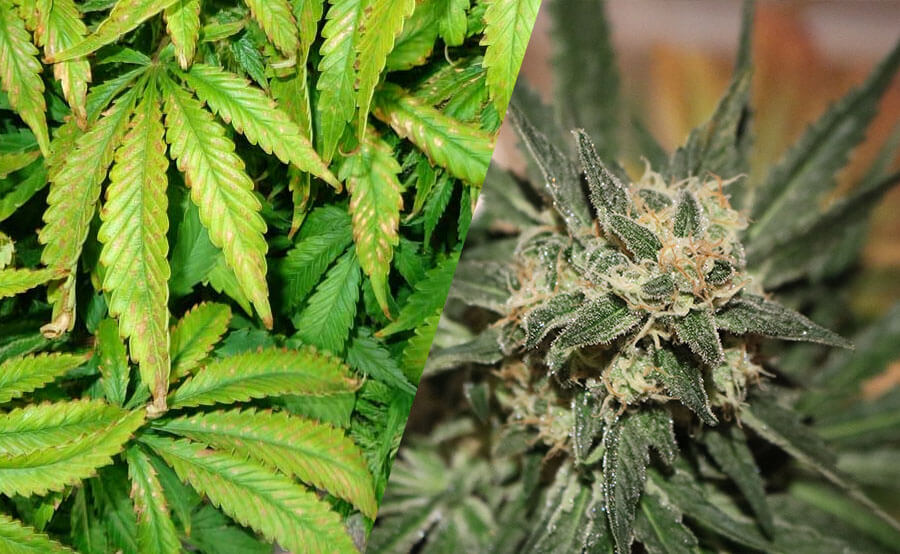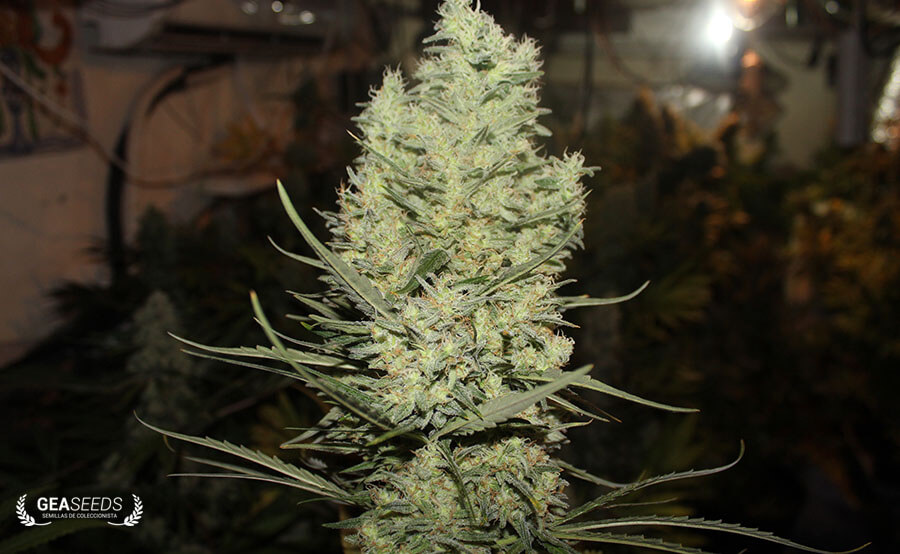During our lifetime, and when cannabis growing, there are two types of stress – good and bad.
Positive stress makes cannabis plants work harder for a desirable objective; negative stress is counterproductive for growing and flowering and, lastly, it could finish plant lives – when cannabis growing, it’s important to maximize the use of good stress and to minimize the introduction of bad stress.

positive and negative stress marijuana
Negative stress
Some plant stressing factors are counterproductive for growing because they inhibit the plant capacity from absorbing the light for proper photosynthesis dark and light stages, they limit the proper amount for leave transpiration, they increase the susceptibility to pest and disease attacks, and, potentially, they make the plants develop genetic abnormalities (hermaphroditism) – it’s important to know the causes and avoid them as much as possible.
Light stress
When flowering, cannabis plants are very susceptible to the stress of light-cycle interruptions – it’s fundamental to keep total darkness along the whole switching off of lights, as well as a constant light change, i.e., lights always get switched on and off at the same time.
When working during light switching-off cycle, just use a low-power green LED as a light source.
Temperature
When indoor growing, heat tends to be a much more negative stressing factor for cannabis plants than cold, due to lamps heat.
When environmental conditions surpass 27-28 degrees, the plants start to modify their growing patterns to provide higher transpiration levels and keep the plant fresh – scarcely robust, branched structures (negative result in final production).
At extremely high temperatures, photosynthesis can cease totally, so growth ripening would delay – it’s fundamental to keep room temperature and humidity at proper levels all day long for efficient growing and flowering.
Positive stress
Some types of stress can be positive for strain development – cannabis plants exposed to certain types of stress will provide robust plants which can produce higher resin amounts and bigger buds.

positive stress
Air circulation
Air circulation in the room’s the most common way to stress the plants – it could be said that every grower has a fan swinging his plants from side to side; with a swinging fan for strain movement, the plant stem gets little tensions which help it get thicker and more robust.
Trimming and tutors
Trimming’s useful for plant growing, manipulating the shape and size of the plant – these stress factors modify the growth when changing the distribution ways of plant nutrients, modulating the metabolic rates and physically expanding the plant sideways, so keeping a uniform canopy gets easier.
There are several ways to get it – some of them are kind of extreme, but it’s worthy to experiment with them if you haven’t done it yet.
Low-stress training (LST) deals with little constant force amounts to stimulate the growth of the branches of the plants in the direction chosen by the growers while the lower nodes get opened for a higher light intensity.
The appliance of this tension along the vegetative-growth stage will provide a growth of thick stems, producing additional capacities of nutrient and water supplying when flowering – this technique’s very good to increase plants efficiency, keeping, at the same time, the total height of the plant to the minimum (SOG/SCROG grows are good examples).
Trimming can be done several times throughout the vegetative stage to keep the desired height of the strains, or to shape them in a certain way – no trimming when flowering.
Cold temperature
At first sight, it could be a bad idea to let cannabis plants get too cold – actually, it could be beneficial to let the room decrease the temperature at night during the last two flowering weeks, so the plants would produce an extra resin amount (more powerful, tastier strains).
Some conclusions
As previously mentioned, stress can affect plants in many ways, good and bad – up to the grower to know how to profit positiveness and control the stressing factors which could be negative for the grow (if properly used, certain stress doses will help increase grow production, so try it on and on).


